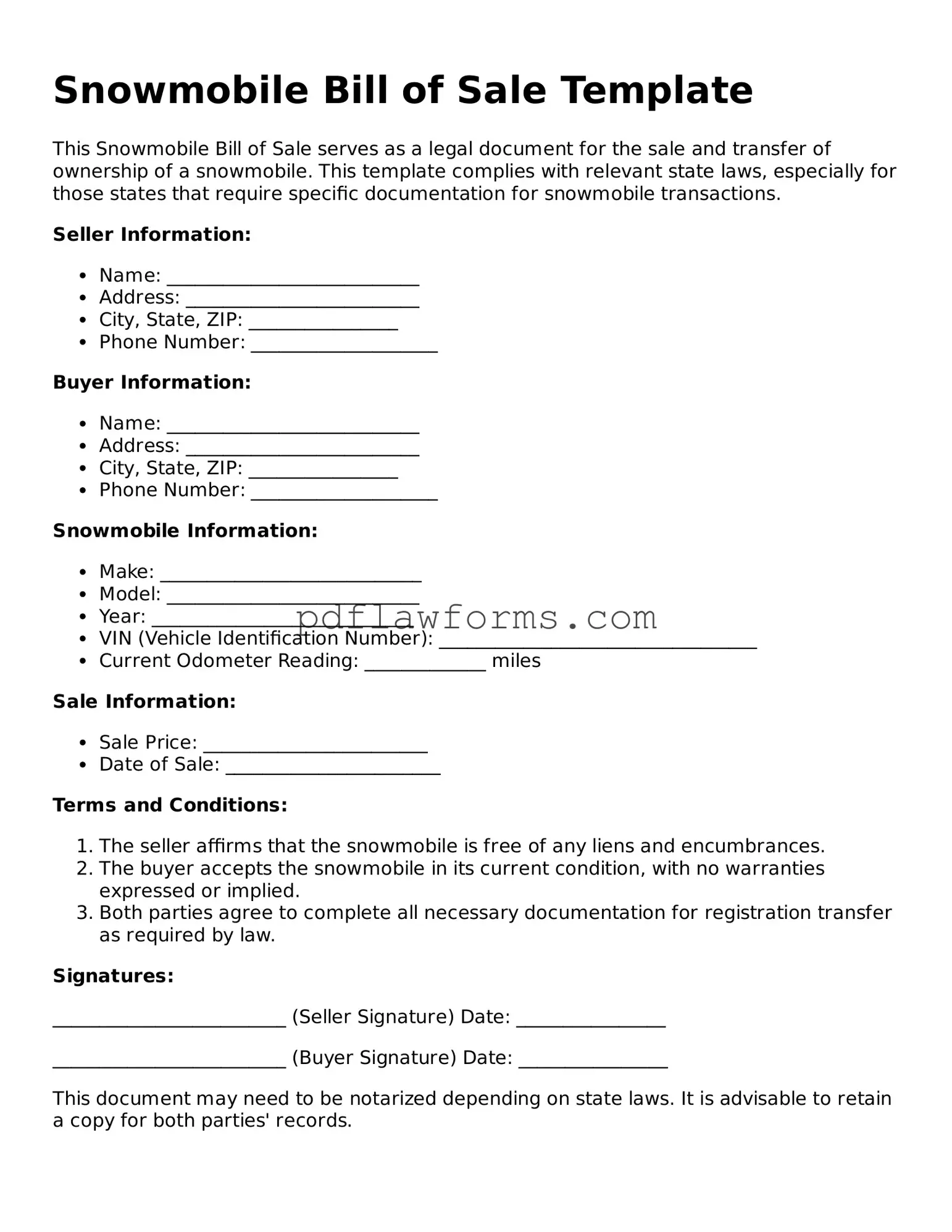Filling out a Snowmobile Bill of Sale form might seem straightforward, but many people make common mistakes that can lead to complications down the road. One prevalent error is not including the correct vehicle identification number (VIN). The VIN is crucial as it uniquely identifies the snowmobile. If this number is incorrect or missing, it can create issues when registering the vehicle.
Another frequent mistake involves the omission of essential buyer and seller information. Both parties must provide their full names, addresses, and contact details. Leaving out any of this information can lead to disputes or difficulties in future transactions. It's important to ensure that all information is accurate and complete.
Some individuals forget to specify the sale price. This detail is not just a formality; it’s necessary for tax purposes and for establishing the value of the snowmobile. Without a clearly stated price, the transaction may be questioned later by tax authorities.
Additionally, failing to include the date of the sale is a common oversight. The date is vital for record-keeping and can affect warranties or any potential claims. Without a date, it may be unclear when the transaction occurred, complicating matters for both the buyer and seller.
People often neglect to sign the document. A Bill of Sale is not legally binding unless both parties have signed it. Without signatures, the agreement lacks validity, leaving both parties vulnerable to disputes.
In some cases, individuals do not provide a description of the snowmobile. This description should include the make, model, year, and color. A thorough description helps prevent misunderstandings about what is being sold and ensures both parties are on the same page.
Finally, some people fail to keep a copy of the completed Bill of Sale. This document serves as proof of the transaction and should be retained by both the buyer and seller. Keeping a copy can save a lot of trouble in the event of future disputes or issues regarding ownership.
